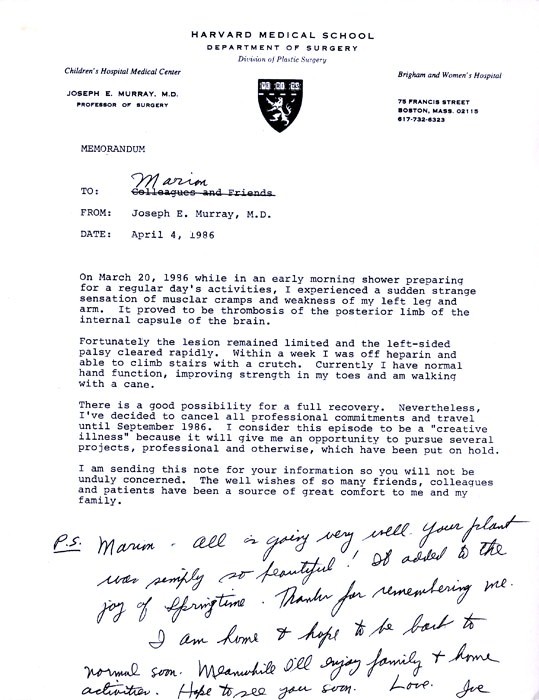Plastic Surgery
In 1971, Murray resigned as the Chief of Transplant Surgery at the Brigham to focus on plastic surgery. He served as the Head of Plastic Surgery at both the Brigham (until 1986) and at Children’s Hospital Boston (1972-1985).
The Brigham Surgical Associates was formed in 1963. It was a partnership to disperse insurance funds from patients to teaching, hospital development, and research. In 1970, the Brigham Surgical Group began its corporate existence, with Murray as a member. According to the Brigham Bulletin "in so doing, it was the first major clinical department of Harvard Medical School to have an all-inclusive fiscal organization making available to faculty physicians some of the fringe benefits formerly enjoyed only by persons in business or administration."
Joseph Murray and Bradford Cannon discuss their careers. They first met at the Army-run Valley Forge General Hospital during World War II. After the war, both returned to Boston (Murray to Peter Bent Brigham Hospital and Cannon to Massachusetts General Hospital) and had distinguished careers in plastic and reconstructive surgery.
Murray's main clinical interests were craniofacial surgery, of which he was an early pioneer, performing the first mid-face advancement in the United States in 1966, as well as head and neck cancer surgery and reconstruction. He also established the first plastic surgery residency in Boston and served as Chairman of the American Board of Plastic Surgery, President of the American Association of Plastic Surgeons and President of the Boston Surgical Society.
On the morning of March 20, 1986, Murray suffered a stroke at his home in Wellesley. He was treated at the Brigham and though he made a full recovery, he chose to retire. In the aftermath of his stroke, Murray reflected on the illnesses in his life in an article entitled "Finding Creativity in Adversity: A Surgeon Ponders the Truths and Consequences of Three Episodes of Illness".


